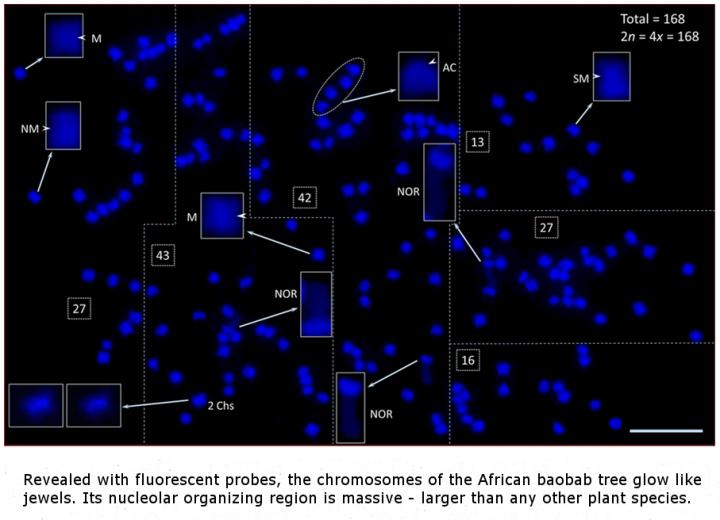USFS scientists advance genetic understanding of African baobab tree

Credit: Islam-Faradi, Sakhanokho & Nelson
The African baobab tree (Adansonia digitata) is called the tree of life. Baobab trees can live for more than a thousand years and provide food, livestock fodder, medicinal compounds, and raw materials. Baobab trees are incredibly significant. However, there are growing conservation concerns and until now, a lack of genetic information.
The African baobab tree has 168 chromosomes – critical knowledge for further genetic studies, conservation, and improvement for agricultural purposes. The findings were published in the journal Scientific Reports. Previous studies estimated that the tree has between 96 and 166 chromosomes.
“We were able to unequivocally count the chromosomes,” says Nurul Faridi, a USDA Forest Service research geneticist who co-led the study with Hamidou Sakhanokho, a USDA Agricultural Research Service research geneticist.
The researchers used fluorescent probes to see the genetic components of individual chromosomes within the cells – which glow like jewels.
The analysis also revealed that the tree has a massive nucleolus organizer region (NOR). Relative to the main chromosome body, this region appears larger than that of any other plant species. During certain stages of the cell cycle, nucleoli form at the NORs. The nucleoli are essential for ribosome assembly and protein synthesis in eukaryotes and are an important feature that differentiates eukaryotes from prokaryotes.
“These genetic findings are foundational and will make genetic conservation of the African baobab tree more efficient and effective,” says Dana Nelson, a coauthor and project leader of the Southern Research Station’s genetic unit. “This research is also a precursor for tree breeding programs seeking to improve baobab for silvicultural applications.”
###
All content is freely available through the Forest Service online catalog at https:/
Media Contact
Sarah Farmer
[email protected]
Related Journal Article
http://dx.




